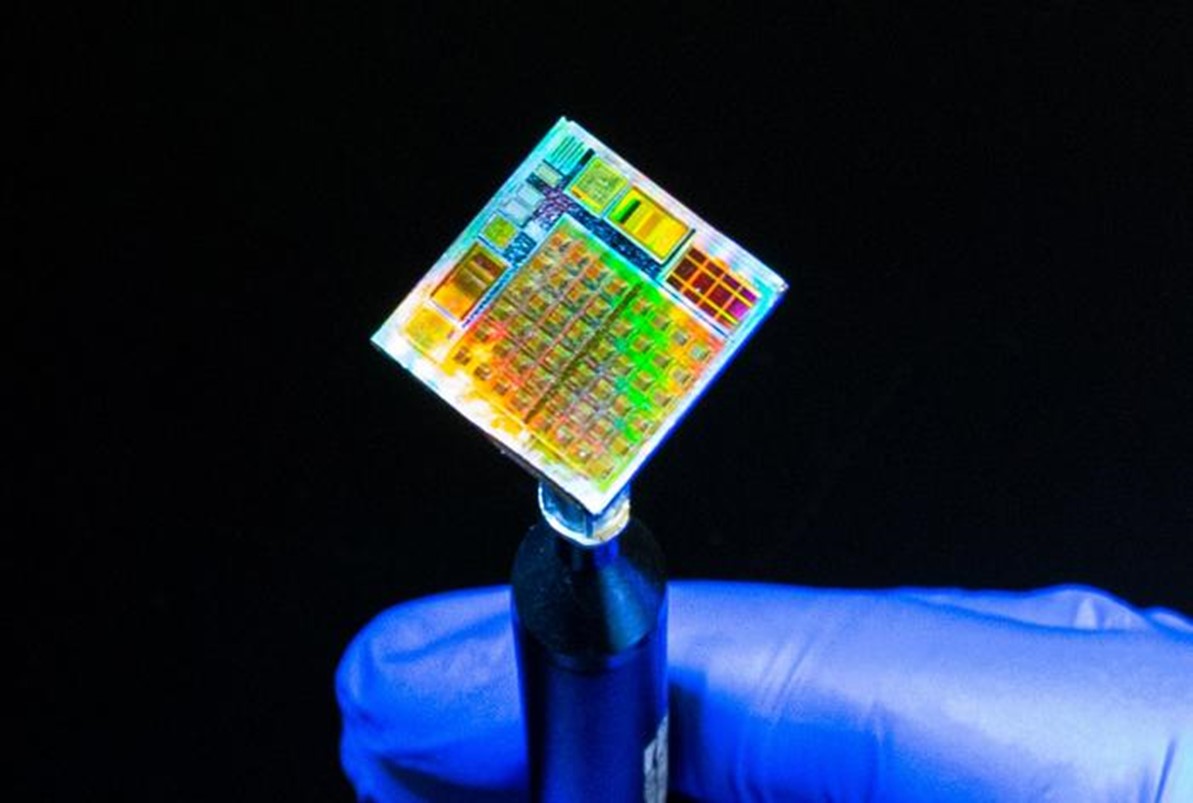World’s First 2D Microchip
In a major milestone, researchers at KAUST have successfully fabricated the world's first fully integrated and functional microchip using exotic two-dimensional (2D) materials. This groundbreaking achievement highlights the immense potential of 2D materials to enhance the performance and capabilities of microchip-based technologies. [1]

Figure 1. world's first 2D microchip
Figure 1 shows KAUST Professor Mario Lanza and his co-researchers have successfully designed the world's first 2D microchip using synthetic materials. Since the discovery of graphene, an atomically thin layer of graphite, in 2004, scientists have been exploring the unique properties of 2D materials for various applications. However, the fragility and challenges associated with fabricating and handling these thin films have hindered the development of functional microdevices using 2D materials. [1]
Building upon recent advancements in the laboratory, the team at KAUST has managed to produce and demonstrate a prototype microchip based on functional 2D films. Their approach involved integrating conventional silicon-based complementary metal oxide semiconductor (CMOS) transistors on one side of the chip, while carefully transferring the 2D material onto the other side using a low-temperature wet process. By optimizing the chip's design and minimizing the impact of defects, they successfully integrated the 2D material without compromising its integrity. [1]
The researchers specifically utilized hexagonal boron nitride (h-BN), a 2D material just 18 atoms thick, due to its exotic properties that make it an ideal memristor—a resistive component with controllable resistance based on applied voltage. Through their innovative design, they created a 5×5 array of one-transistor/one-memristor cells, interconnected in a crossbar matrix. This configuration allowed for precise voltage control and enabled the memristor to function as a reliable, high-performance element within a low-power neural network. [1]
The implications of this flagship breakthrough are far-reaching, with discussions underway between the research team and leading semiconductor companies to further advance this technology. Additionally, there are plans to establish an in-house wafer-scale industrial processing system for 2D materials at KAUST, aiming to drive progress and innovation in this field. [1]
By successfully fabricating a functional microchip using 2D materials, this achievement paves the way for exciting possibilities in the realm of microchip technology, pushing the boundaries of performance and opening up new avenues for innovation and advancement. [1]
Source: KAUST
References:
- https://discovery.kaust.edu.sa/en/article/21246/functional-2d-enabled-microchips-become-reality/
Cite this article:
Hana M (2023), World’s First 2D Microchip, AnaTechmaz, pp.456

